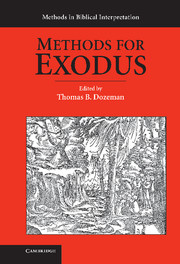Book contents
2 - Genre Criticism
Published online by Cambridge University Press: 05 June 2012
Summary
THE METHODOLOGY OF GENRE CRITICISM
Genre is a loan word from the French that means “kind” or “type.” The term is widely used with reference to human discourse; to inquire about the genre of verbal discourse, whether of a spoken utterance or written text, is to ask about the sort of discourse that it is. Utterances might be “commands,” “questions,” “poems,” or “stories,” just as texts might be “biographies,” “histories,” “letters,” or “newspaper articles.” When we identify verbal discourse using one of these labels, we imply that we know something about how that type of discourse works and that we have the competence to understand it to some degree. If we have this skill as interpreters of literature, scholars would say that we have generic or literary competence. Our objective in the present article is modestly to pursue generic competence as readers of the Bible and, more specifically, as readers of the Book of Exodus. The quest begins with a bit of historical reflection on form criticism, which is the theoretical forerunner of genre criticism.
The Origins and Nature of Form Criticism
It would be accurate to say that prior to the Enlightenment (c. eighteenth cent.), the Bible's genre was foremost understood as “divine word.” By this I do not mean to say that pre-Enlightenment scholars failed to notice that different types of literature were in the Bible; I mean instead that, whatever these other genres were, they were considered secondary to the Bible's status as divine discourse.
Information
- Type
- Chapter
- Information
- Methods for Exodus , pp. 55 - 94Publisher: Cambridge University PressPrint publication year: 2010
References
Accessibility standard: Unknown
Why this information is here
This section outlines the accessibility features of this content - including support for screen readers, full keyboard navigation and high-contrast display options. This may not be relevant for you.Accessibility Information
- 3
- Cited by
